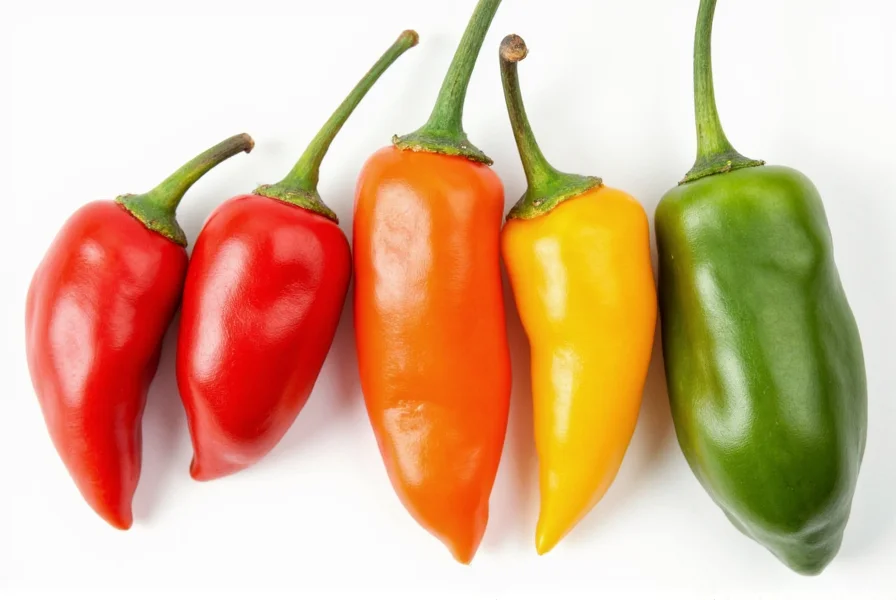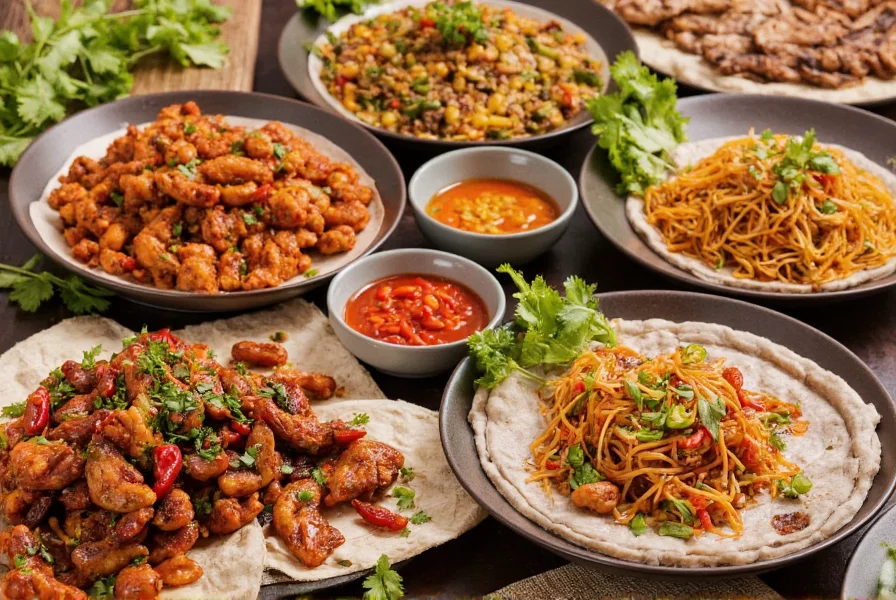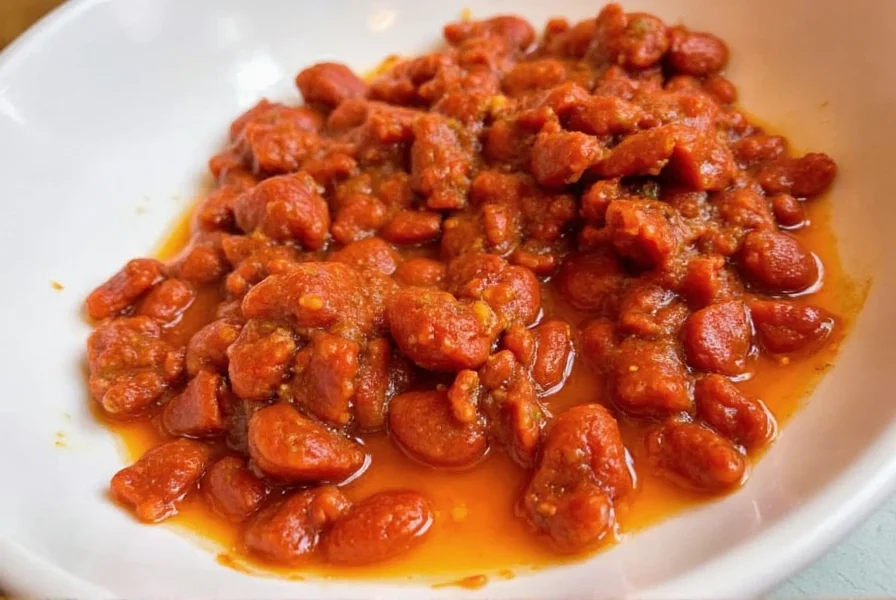When you can't find bird's eye chilies for your favorite Thai curry or Vietnamese dipping sauce, knowing the right substitute makes all the difference. These tiny but mighty peppers deliver distinctive heat and flavor that defines many Southeast Asian dishes. Understanding their unique characteristics helps you select the most appropriate alternative without compromising your recipe's authenticity.
Understanding Bird's Eye Chilies
Bird's eye chilies, also known as Thai chilies or prik kee noo, pack serious heat measuring between 50,000-100,000 Scoville Heat Units (SHU). They're significantly hotter than jalapeños (2,500-8,000 SHU) but milder than the notorious ghost peppers (855,000-1,041,427 SHU). Their flavor profile features bright, citrusy notes with floral undertones that complement coconut-based curries and fresh salads.
Native to Southeast Asia, these chilies appear in various colors including green, red, and even purple, depending on ripeness. The red varieties tend to be slightly sweeter while maintaining the signature intense heat. When substituting, consider both the heat level and flavor characteristics to maintain your dish's intended profile.

Best Bird's Eye Chili Substitutes Compared
| Substitute | Scoville Units | Flavor Profile | Substitution Ratio | Best For |
|---|---|---|---|---|
| Thai Chilies | 50,000-100,000 | Nearly identical - citrusy, floral | 1:1 | All Thai/Vietnamese dishes |
| Serrano Peppers | 10,000-23,000 | Grassy, brighter heat | 1:1 (adjust to taste) | Thai curries, salsas |
| Cayenne + Red Pepper Flakes | 30,000-50,000 | Direct heat, less complexity | 1/2 tsp cayenne + 1/4 tsp flakes per chili | Cooking applications, sauces |
| Jalapeños | 2,500-8,000 | Grassy, milder | 1 pepper = 2-3 chilies | Milder versions of Southeast Asian dishes |
| Hungarian Wax Peppers | 1,000-15,000 | Sweet, mild heat | 1 pepper = 3-4 chilies | Dishes requiring milder heat |
Practical Substitution Guide for Common Dishes
Knowing how to substitute bird's eye chilies depends heavily on your specific recipe. The best bird's eye chili substitute for curry differs from what works in fresh dipping sauces or stir-fries. Here's how to make smart substitutions based on cooking application:
For Thai Curries and Coconut-Based Sauces
When making red or green curry paste from scratch, serrano peppers provide the closest approximation to bird's eye chilies. Their heat profile works well with the other curry ingredients. For store-bought curry pastes that call for fresh chilies, use a combination of cayenne pepper and a touch of red pepper flakes to replicate the intense heat without overwhelming the delicate balance of flavors.
For Fresh Dipping Sauces and Salads
For dishes like Vietnamese nuoc cham or Thai nam prik where fresh chili flavor shines, Thai chilies remain the ideal substitute. If unavailable, finely minced serranos work well but add them later in preparation to preserve their brighter flavor notes. Never use dried alternatives for fresh applications as they lack the necessary aromatic qualities.

Regional Substitutes Based on Availability
Your location significantly impacts which substitutes make practical sense. Understanding regional alternatives helps you adapt without compromising authenticity:
In North America
Serrano peppers appear regularly in mainstream grocery stores, making them the most accessible substitute. For specialty applications, check Asian markets for fresh Thai chilies (often labeled as bird's eye) or dried versions. Many larger supermarkets now carry small bottles of pre-made Thai chili sauce that can substitute when fresh chilies aren't available.
In Europe
Look for pequín or malagueta peppers in specialty markets, which closely match bird's eye characteristics. European markets often carry dried bird's eye chilies even when fresh ones are unavailable. For immediate needs, a combination of cayenne and a touch of smoked paprika can approximate both heat and complexity.
Adjusting Recipes When Substituting
Successful substitution requires more than simple ratio replacement. Consider these professional techniques when adapting recipes:
- Add gradually: Start with half the recommended substitute amount, then adjust to taste after cooking
- Consider timing: Add milder substitutes earlier in cooking; add hotter alternatives later to preserve their distinct flavor
- Balance with cooling elements: When using hotter substitutes, increase coconut milk, lime juice, or sugar proportionally
- Seed strategically: Remove seeds from substitutes to reduce heat while maintaining flavor
For the best bird's eye chili substitute in curry recipes, remember that the cooking process affects heat perception. Long simmering distributes heat more evenly but can mellow some chili varieties more than others. Always taste and adjust seasoning near the end of cooking.
Storage and Preparation Tips
Proper handling maximizes the effectiveness of your substitutes. Store fresh chili alternatives in perforated plastic bags in the refrigerator crisper drawer for up to two weeks. For longer storage, freeze whole peppers on a baking sheet before transferring to freezer bags - they'll remain usable for cooking applications for up to six months.
When preparing substitutes, wear gloves to protect your skin from capsaicin oils. Never touch your face after handling hot peppers. If you accidentally transfer oils to sensitive areas, use milk or yogurt to neutralize the burning sensation rather than water, which spreads the oils.
Finding Authentic Flavor Without Bird's Eye Chilies
When perfect substitutes aren't available, focus on capturing the essence of Southeast Asian cuisine through complementary ingredients. Add a touch of makrut lime leaves, lemongrass, or galangal to compensate for flavor differences in your bird's eye chili alternative. These aromatic elements help maintain authenticity even when the precise heat profile differs slightly.
For those seeking a mild bird's eye chili alternative for family-friendly versions of traditional dishes, consider using a combination of bell peppers for bulk and a small amount of cayenne for background heat. This approach preserves texture while making dishes accessible to those with lower heat tolerance.











 浙公网安备
33010002000092号
浙公网安备
33010002000092号 浙B2-20120091-4
浙B2-20120091-4